Great question, I cannot get the matplotlib Sankey to create a diagram with many to many relations either. As a workaround I created a lineplot that looks like a Sankey:
import matplotlib.pyplot as plt
import pandas as pd
import random
# prepare example data: flow of students from zipcodes to schools
flows = [('2251', 'school A', 7), ('2251', 'school B', 6), ('2252', 'school A', 3), ('2252', 'school B', 8), ('2253', 'school B', 1), ('2252', 'school C', 12), ('2253', 'school A', 8), ('2252', 'school D', 16)]
df_flows = pd.DataFrame(flows, columns=['zipcode', 'school', 'students'])
df_flows['color'] = ["#"+''.join([random.choice('0123456789ABCDEF') for j in range(6)]) for i in range(len(df_flows))]
# sort by zipcode to get the right y position per school
df_flows.sort_values(['zipcode','school'], ascending=False, inplace=True)
ypos_0 = 0
current = df_flows.iloc[0]['zipcode']
whitespace = 2
for i,r in df_flows.iterrows(): # I tried with .shift() and .cumsum() but failed
zipcode = r['zipcode']
if current != zipcode:
ypos_0 += + whitespace
current = zipcode
df_flows.at[i,'y_pos_zipcode_0'] = ypos_0
df_flows.at[i,'y_pos_zipcode_1'] = ypos_0 + r['students']
ypos_0 += r['students']
# sort by school to get the right y position per school
df_flows.sort_values(['school','zipcode'], ascending=False, inplace=True)
ypos_0 = 0
current = df_flows.iloc[0]['school']
for i,r in df_flows.iterrows(): # I tried with .shift() and .cumsum() but failed
school = r['school']
if current != school:
ypos_0 += + whitespace
current = school
df_flows.at[i,'y_pos_school_0'] = ypos_0
df_flows.at[i,'y_pos_school_1'] = ypos_0 + r['students']
ypos_0 += r['students']
# y position of the labels: in the middle
s = df_flows.groupby('school')['y_pos_school_0'].min()
df_flows['y_pos_label_school_min'] = df_flows['school'].map(s)
s = df_flows.groupby('school')['y_pos_school_1'].max()
df_flows['y_pos_label_school_max'] = df_flows['school'].map(s)
df_flows['y_pos_label_school'] = (df_flows['y_pos_label_school_max'] + df_flows['y_pos_label_school_min']) / 2
s = df_flows.groupby('zipcode')['y_pos_zipcode_0'].min()
df_flows['y_pos_label_zipcode_min'] = df_flows['zipcode'].map(s)
s = df_flows.groupby('zipcode')['y_pos_zipcode_1'].max()
df_flows['y_pos_label_zipcode_max'] = df_flows['zipcode'].map(s)
df_flows['y_pos_label_zipcode'] = (df_flows['y_pos_label_zipcode_max'] + df_flows['y_pos_label_zipcode_min']) / 2
# determine x and y positions for the annotations
xval = 1/(len(df_flows)+1)
df_flows['x_pos_annotation'] = [xval*_ for _ in range(1,len(df_flows)+1)]
df_flows['y_pos_min'] = df_flows[['y_pos_zipcode_0','y_pos_school_0']].min(axis=1)
df_flows['y_pos_max'] = df_flows[['y_pos_zipcode_1','y_pos_school_1']].max(axis=1)
df_flows['y_pos_mid'] = (df_flows['y_pos_min'] + df_flows['y_pos_max']) / 2
df_flows['y_pos_delta'] = df_flows['y_pos_max'] - df_flows['y_pos_min']
df_flows['y_pos_direction'] = df_flows['y_pos_zipcode_0'] - df_flows['y_pos_school_0']
df_flows['y_pos_direction'] = df_flows['y_pos_direction'].apply(lambda x: -1 if x>0 else 1)
# the position is lower or higher than the middle -> the adjustment is proportional of the number of students
df_flows['x_pos_adjust'] = df_flows['x_pos_annotation'] - 0.5
df_flows['x_pos_adjust_abs'] = df_flows['x_pos_adjust'].apply(lambda x:abs(x))
df_flows['y_pos_adjust'] = df_flows['x_pos_adjust'] * df_flows['y_pos_direction'] * df_flows['y_pos_delta']
df_flows['y_pos_annotation'] = df_flows['y_pos_adjust'] + df_flows['y_pos_mid'] - (df_flows['students']*df_flows['x_pos_adjust_abs'])
# create sub df as basis for arrays to set axis labels
df_zipcode_ticks = df_flows[['zipcode','y_pos_label_zipcode']].drop_duplicates(keep='first')
df_school_ticks = df_flows[['school','y_pos_label_school']].drop_duplicates(keep='first')
# create the sankey like linechart using fill_between
fig = plt.figure()
ax = fig.add_subplot(1, 1, 1, title="Connected sankey diagram using a matplotlib lineplot")
for index, flow in df_flows.iterrows():
_ = plt.plot([0,1],[flow['y_pos_zipcode_0'],flow['y_pos_school_0']],color=flow['color'], alpha=0.3)
_ = plt.plot([0,1],[flow['y_pos_zipcode_1'],flow['y_pos_school_1']],color=flow['color'], alpha=0.3)
plt.fill_between([0,1],[flow['y_pos_zipcode_0'],flow['y_pos_school_0']],[flow['y_pos_zipcode_1'],flow['y_pos_school_1']],color=flow['color'], alpha=0.3)
ax.annotate(f"{flow['students']}", xy=(flow['x_pos_annotation'],flow['y_pos_annotation']), xycoords='data')
ax.set_xticks([])
ax.set_yticks(df_zipcode_ticks['y_pos_label_zipcode'].values)
ax.set_yticklabels(df_zipcode_ticks['zipcode'].values)
ymin = df_flows['y_pos_school_0'].min()
ymax = df_flows['y_pos_school_1'].max()
ax.set_xlim([0,1])
ax.set_ylim([ymin,ymax])
# new ax object to create a 2nd y-axis based on a shared x-axis
ax2 = ax.twinx()
ax2.set_yticks(df_school_ticks['y_pos_label_school'])
ax2.set_yticklabels(df_school_ticks['school'])
ax2.set_ylim([ymin,ymax])
plt.show()

 .
. 